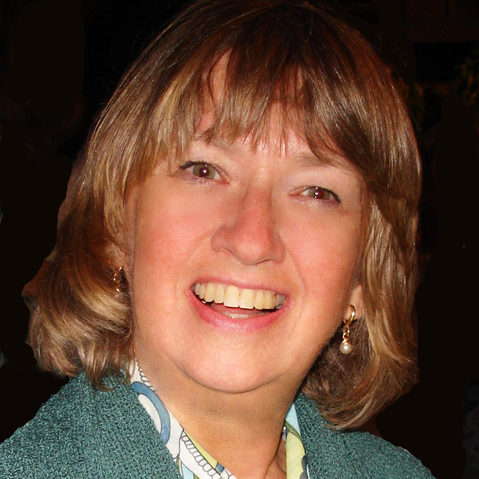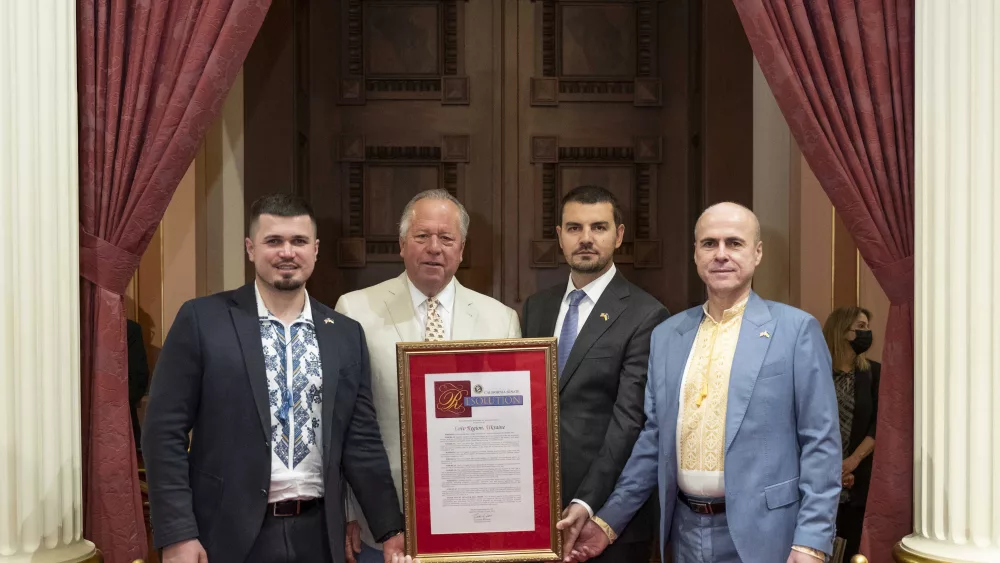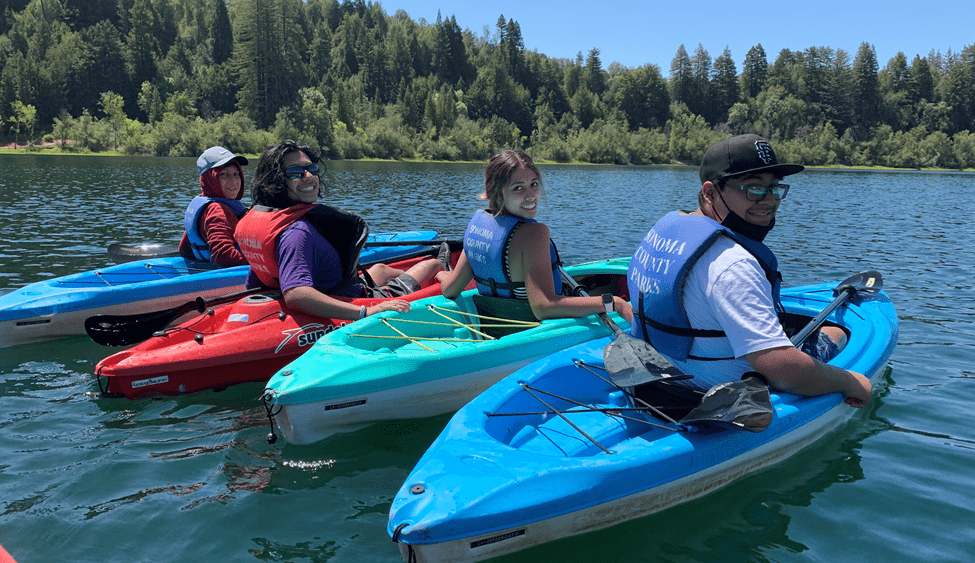
The spirit of giving is abundant in North Bay counties. Residents north of the Golden Gate are among the most generous in California, according to recently reported data from the Internal Revenue Service. And particularly outstanding are the residents of Inverness, who donated 8.64% of their income to charity—making the West Marin community’s philanthropy the fifth highest in the state. The report focuses on charitable donations, but the altruism goes beyond giving money. It extends to the people who operate the nonprofit organizations that collect the funds and use them to deliver services to fulfill their mission.
And with thousands of nonprofit businesses actively operating in Marin, Sonoma and Napa counties, the work they do is significant.
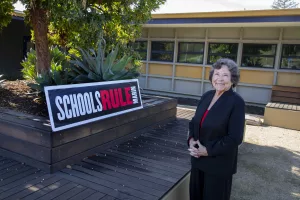
For Trisha Garlock, a founding director of Kiddo! Mill Valley Schools Community Foundation and now executive director of SchoolsRule-Marin, providing support for local schools has been a passion for more than 40 years. She explains that the school fundraising movement began in the early 1980s, after the passage of Proposition 13 caused a decrease in state revenue from property taxes and led California to reduce funding for schools. “We were going to have to cut art and music,” she says about the ripple effect from Prop. 13, and so the PTA ran a bake sale at the Mill Valley Fall Arts Festival to raise funds to supplement the budget for the Mill Valley School District’s K-8 schools, allowing them to retain classes in the arts. People recognized that good schools with well-rounded programs are a benefit to the community, and so the next step was starting a foundation to create an ongoing way to pay for the programs at risk. “We patterned ourselves on the San Francisco Education Fund,” she says, and the schools in nearby Kentfield had already established a foundation, and their leaders provided advice and guidance.
Following those examples, the grassroots Mill Valley group decided to establish a 501(c)(3) nonprofit, because such organizations are tax exempt, which allows more funding to go to the cause, and eligible donors can claim tax deductions. “It’s about making the donations tax deductible. To give a tax deduction, you have to be a nonprofit. To apply for grants, you have to be a nonprofit,” she says, adding that the designation also gives an organization credibility. Kiddo started in 1981 and got official nonprofit status in 1982—and that first year, it raised $27,000. Since then, the increase in fundraising for schools has been substantial. In 2022, according to executive director Jessica Newman, Kiddo’s revenues totaled $2.9 million.
The National Center for Charitable Statistics reports that the number of nonprofits in the United States has quadrupled over the past 40 years. Linda Jacobs, CEO of the Center for Volunteer & Nonprofit Leadership in San Rafael, believes that a rise in the demand for services over time accounts for the growth, a situation that she attributes to a government that isn’t providing as much assistance as required and a substantial increase in inequity. She used to think that having too many nonprofits was a concern—but her opinion changed about 10 years ago, and now she believes the market dictates the numbers. “The question should be: ‘Is everybody being served?’” she explains. “We tend to step up to fill the gaps,” she observes, and so the number of nonprofits should be based on needs and filling them. An awareness of the needs has also grown, thanks to social media, technology, marketing and education. And donations and donor-advised funds have increased along with the number of nonprofits. She attributes much of the growth in nonprofit activities to individuals who want to make a difference. “That has a pretty big impact,” she says.
“The problem is there’s so much need,” says Garlock. “I’m glad there are so many [nonprofits]. I think everybody who has started a nonprofit is so passionate… it gives people a way to help in a way to feel like they’re making a difference. Everybody who has compassion wants to make a difference anyway they can.” She adds that obstacles are a constant challenge, but says, “You have to be courageous and keep going.”
Leading the way
The Center for Volunteer & Nonprofit Leadership (CVNL) was established in 1964 as the Volunteer Bureau of Marin County, and it became the Center for Volunteer & Nonprofit Leadership in 2003 after merging with the Marin Council of Agencies. It expanded to Napa County in 2015, to Solano County in 2016 and then to Sonoma in 2019, when the Volunteer Center of Sonoma County was searching for an executive director, and the two organizations recognized that they were doing similar work and decided to merge. “All of them kind of happened by circumstances,” she says, adding that Sonoma County is the largest branch and runs big programs such as paratransit and legal assistance.
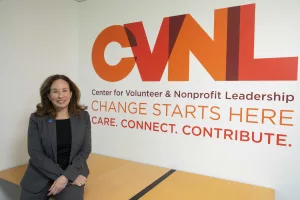
Running a nonprofit comes with certain responsibilities, which can be daunting for the inexperienced—and “for 60 years now, CVNL has been a leader in providing support to nonprofits,” says Jacobs.
“We know that nonprofits are the backbone of our communities,” Jacobs says. Thus, CVNL offers training to help organizations succeed, with strengthening leadership, encouraging innovation and empowering individuals as its primary goals. All training and leadership programs are related to specific focus areas and include leadership, oversight, generating funds and planning and management. Oversight looks at risk management, while planning involves strategic planning and setting goals. Leadership looks at organizational development, and management includes all the things one needs to know to run a business. “In many ways, it’s just like running any business,” she explains. Generating funds involves soliciting donations, but “Individual giving isn’t number one,” she says. Rather, the most common source of revenue is fee for service, and so nonprofits such as hospitals charge for services, and museums and concert halls charge for admission. (Museum stores are a revenue source, but as retail operations they are businesses and are taxable.)
In addition, CVNL offers a four-part Board Governance Boot Camp, which Jacobs, who is a consultant in board governance, leads in partnership with Chief Capacity Building Officer Tom Hayashi. “Board governance is my nerdy spot. I just love that area,” she says, and the goal is to give nonprofit executive directors and board members the skills they need to run an effective, sustainable organization and a clear understanding of their duties.
For people who are new to the nonprofit world, Jacobs has some advice. “Surround yourself with people who know what you don’t,” she says. “Don’t reinvent the wheel. Read, talk to people, research. Be a student.” The goals should be to fill a need that’s not already being addressed and to create an organization that’s distinct from others. She points out that times have changed, and nonprofit leaders must look at new ways of doing things and strive to be relevant. “Know what’s going on around you,” she says, and be aware of social and political issues that could affect an organization.
Another path
Marin Community Foundation is Marin County’s largest nonprofit, overseeing $2.9 billion in philanthropic assets and distributing $76 million in grants in the first quarter of fiscal year 2024. As a public foundation, MCF is a 501(c)(3) and, in addition to its own charitable giving, which goes to a variety of educational, medical, social and environmental purposes, partners with more than 555 individuals and their families and manages more than 881 different funds for philanthropists who don’t want to operate their own nonprofits.
“They can come to us for donor-advised funds,” says Andrea Henderson, senior director of philanthropic planning. To create a DAF, an individual, family or corporation makes an irrevocable donation of cash, stock or perhaps real estate to MCF and receives an immediate tax deduction. MCF then manages the funds in the account, makes donations to 501(c)(3) charities on the account holder’s behalf and is responsible for tax filings, audits and administration. “MCF takes on the burden,” she says, explaining that the donor gives up ownership of the funds, and the account is under MCF stewardship, frequently with the account holder as an advisor.
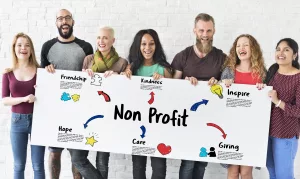
The first step is a meeting to discuss what the donor wants to accomplish. “We’re part of an advisory team. We do the planning, and you sit down with us to figure out the philanthropy,” says Henderson. Next they craft a fund agreement, with donors outlining where they want their dollars to go. A fund might be unrestricted, in which case, “They can say you guys are the experts,” and leave the decisions to MCF, Henderson explains. Or a donor might identify causes that are personally meaningful and designate funds to specific nonprofits every year. “The amount of involvement is up to the donor, and the details are outlined in the agreement.”
MCF also offers Virtuoso, an alternative to a private foundation for funds of $5 million and higher. MCF describes it as custom-made philanthropy for people with substantial resources and a firm commitment to charitable giving. Among the services are investment options, grantmaking support and private-label branding designed by MCF’s marketing, team as well as IRS compliance. Private foundations require public disclosure, so one of the advantages is that a donor who is concerned about privacy can remain anonymous. “Some families feel that discretion is important,” Henderson says. “They don’t want the spotlight to be on them. They want to be humble.”
MCF also partners with organizations such as Rotary clubs that are 501(c)(4)s and want an easy way to make charitable donations. If a club receives a large gift and wants to be able to manage the money effectively without establishing its own foundation, it can open a fund and instruct MCF to make grants to support Rotary’s mission. Meanwhile, MCF’s investment team makes thoughtful investment decisions to grow the funds so the club doesn’t have to worry about where to invest.
“I am often asked why someone should engage with MCF for their philanthropy, as opposed to all the other options that exist,” says President and CEO Rhea Suh. “My simple answer is community. If you want to have the opportunity to deeply understand your community, connect with those in it, collaborate to develop new approaches and generally feel really engaged with your giving, come join us. For us, community is everything.”
The strength of community
By 2010, most school districts in Marin County had foundations working on their behalf. The money they raised stayed in their school districts, and while that worked well in affluent school districts, other districts such as San Rafael, Novato and West Marin didn’t have the same advantage. “They have a harder time raising funds because of demographics,” Garlock reports.
That year, the Marin Independent Journal, as part of the newspaper’s 150th anniversary, was looking for ways to support public education. Representatives of the paper met with then-Marin County schools superintendent Mary Jane Burke and offered free advertising space to let readers know that the schools needed money. Not all districts had the resources to provide camera-ready ad copy, however, and the solution was to get all the foundations to collaborate. The result was SchoolsRule-Marin.
“I’d been around the longest,” says Garlock about how she became the executive director. The Marin County Office of Education (MCOE) was the fiscal sponsor, so it provided office space and handled donations. MCOE is a tax-exempt nonprofit, but while the foundations are 501(c)(3)s, as a government-funded educational organization, MCOE is tax-exempt under the terms of IRS Code 170(c)1. The money was divided equally on a per-student basis so that every child in every public school benefited, and those with foundations knew how to use the funds most effectively. “It might hire a music teacher or a place for a drama program,” Garlock explains. But whatever its use, 100% goes directly into school programs to benefit the kids.
At the outset, Redwood Credit Union, a 501(c)(1) nonprofit, stepped up to become a major donor, and then in November 2023, SchoolRules-Sonoma County launched, and RCU hosted the kick-off party and made a three-year commitment to donate $50,000 annually to help the new nonprofit start out on firm financial footing. RCU President and CEO Brett Martinez spoke about the credit union’s long-standing support of SchoolsRule-Marin and his belief in a countywide approach, which began when Burke first approached him to solicit RCU’s support. “Providing well-rounded education opportunities for all students is vital to the future of our communities,” he says. “When I learned what SchoolsRule-Marin was doing, I saw it for the amazing idea that it was, and so we made the commitment right then. It’s a gift for us to be able to replicate Marin’s success in Sonoma County.” He added that beginning in January, RCU will make a donation to SchoolsRule-Sonoma County every time a Sonoma County resident makes a purchase using their RCU credit card, beginning in January, in a program similar to one in Marin County.
Local support is essential for nonprofits to be successful. “It’s an investment in our communities,” says Jacobs. She points out, however, that the greatest measure of success is eliminating the need a nonprofit seeks to address. “The ultimate goal is to solve a huge problem and go out of business. That means you’ve been successful,” she explains. Meanwhile, the needs are great, and the work goes on thanks to caring individuals dedicated to helping others. “People who work in nonprofits all have such big hearts,” she says. “That has never changed. That is something that will be around forever.”
Check out a Board Governance Boot Camp video at cvnl.org/board-governance-boot-camp/.


